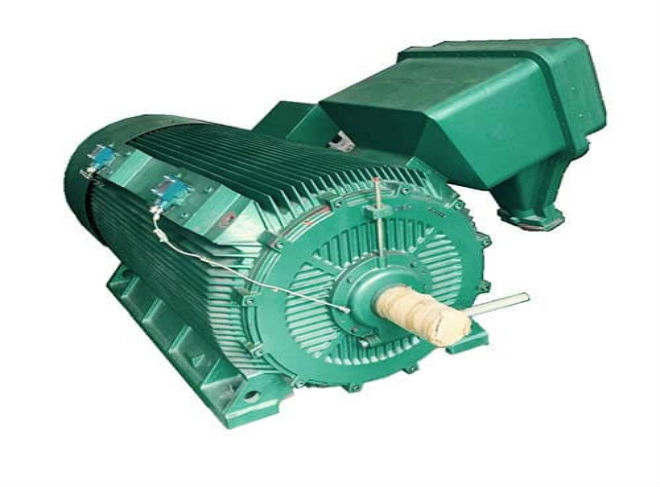Asynchronous Motor Suppliers tell you about the difference between squirrel cage and wound three-phase motors
The most common three-phase asynchronous motors in daily work are squirrel cage motors and winding motors. This is classified according to their rotor structure.
From the appearance, the most obvious difference is that the wound motor has a rotor slip ring, while the Squirrel Cage High Voltage Motor does not.
The rotor winding of the squirrel cage motor is a short-circuit winding. A conductor is placed in each slot of the rotor. The conductor is longer than the iron core. Two end rings are used to short the conductor at both ends of the iron core to form a short-circuit winding. If the iron core is removed, the remaining winding looks like a squirrel cage, so it is called a squirrel cage winding.

Squirrel Cage High Voltage Motor
Wire-wound motor: the rotor is a coil made of copper wire, and the end of the coil is led to the start control device through a slip ring.
The main difference in structure between the wound Three-Phase Asynchronous Motor and the cage three-phase asynchronous motor is the rotor. Wound-type rotor windings use insulated wires, which are divided into three phase windings, which are symmetrically embedded in the rotor core slot according to a certain rule. The ends of the three phase windings are connected at one point, and the head ends are respectively connected to the rotor shaft. The three copper slip rings (ie Y connection) are connected to the three-phase varistor via three brushes that are in frictional contact with the slip ring. The slip rings and the slip ring and the rotating shaft are insulated from each other.
The cage-shaped rotor winding is like a squirrel cage. Only one copper or aluminum bar is embedded in each rotor slot. At the slots at both ends of the core, two copper or aluminum end rings separate the Copper or aluminum bars are connected to form a short-circuit conductive loop. At present, most of them are cast into aluminum cage rotor windings in the rotor slot with aluminum liquid at one time. In order to increase the starting torque, deep slot cage rotor windings (long and narrow cage bars) or double cage rotor windings (connected with high resistance materials into two squirrel cages) are used.
Advantages: simple structure, convenient start, reliable operation, small size, sturdy and durable, easy to maintain, overhaul and install, low cost, etc.
Disadvantages: the starting torque is small, the power factor is low, the speed is not easy to adjust, and the starting current is large when starting directly. Under normal circumstances, the squirrel-cage motor runs 2-3 times in a cold state, and the interval between each time should not be less than 5 minutes. Run once in hot state. When the squirrel cage asynchronous motor is frequently started, it is easy to cause the squirrel cage to break.
Advantages: By connecting an external resistor in the rotor loop, the starting current and speed are reduced, and the starting torque is increased. It can improve the starting and speed regulation performance of the motor.
Disadvantages: complex structure, troublesome maintenance, poor operating reliability, and more expensive.
Copyright © ZCL Electric Motor Technology Co., Ltd. All Rights Reserved | Sitemap | Powered by 